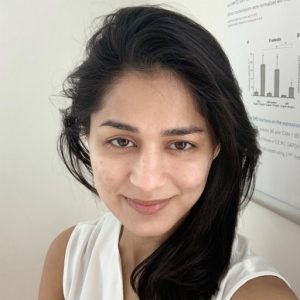 Organization/Department
Organization/Department
Center for Medical Physics and Biomedical Engineering
Research Associate (Post-doc)
Biography
Dr. Gunpreet Oberoi is a Dental Implantologist by education, currently working as a post-doc in Medical Additive manufacturing team at the Center for Medical Physics and Biomedical Engineering. Her initial years in research were spent in establishing complex shaped three- dimensional oral micro-tissues as an in vivo like platform for biocompatibility testing of 3D printing materials and future bioprinting. She research focuses on designing 3D printed animal and human simulation models to replace, reduce and refine pre-clinical and clinical experiments. These models are used for designing and developing medical devices, surgical planning and skills training in human and veterinary medicine. Her aim is to utilize 3D printing in providing standard healthcare to the masses and escalating patient-safety.
Title of Talk
Additively Manufactured Human Oral Mucosa Model for Surgical Simulation
Abstract
INTRODUCTION
3D printing lends itself to the organic nature of the printed model. For better haptics and proprioception while handling 3D printed skin/ mucosa simulation models, it is imperative to replicate the tissue properties as closely as possible. Currently employed 3D printed skin / mucosa models have a lower incision and tear resistance for sutures compared to the human skin. The aim of our study was to design and print a polymer material with a modified macrostructure to mimic the heterogeneous nature of human tissues like skin and mucosa, and to verify if this modification helps to smoothen the transition of mechanical properties among different tissues and stabilize the sutured edges.
EXPERIMENTAL/THEORETICAL STUDY
The 3D printed (3DP) polymer specimens were divided into 8 groups consisting of different lattice designs in their macrostructure. Specimens were printed using a PolyJet printer and calculated ratio of rigid and flexible materials. Shore hardness and elasticity was measured using Durometer and 3-point bending test, respectively. To simulate suturing, interrupted 3-0 silk sutures were used to connect the 3DP skin models by a single operator. The mechanical properties of the sutured junction of 3DP polymers representing were analyzed by the tensile test (ISO527) in 8 groups with 6 replicates each, using a uniaxial universal test machine. Kruskal- Wallis H test was used to perform statistical analysis (p<0.05).
RESULTS AND DISCUSSION
Based on the mechanical properties of the currently available UV-cured AM materials it was not possible to reach the low range of the elasticity of the skin (0,2MPa) or the higher values of bone up to (17GPa) . While, the tensile strength of these materials was sufficient to mimic the human oral mucosa with elasticity in the range of 1- 20MPa. The tensile strength of the AM reinforced material made of a combination of soft and hard material was measured in the range of 1-5MPa. Depending on the type of macrostructures between hard and soft materials it was possible to attain stable sutured margins representing wound edges. The cubic structure showed a significant increase in the break force of interrupted surgical suture (p<0.05). Apart from the lower tendency of developing a suture induced tear, the structures with bars had lower effect on the change of the stiffness of the soft material.
CONCLUSION
The multi-material printer allows the production of suturing models for mucosa with reinforced macrostructure and offers an easier production method as compared to molding processes.
